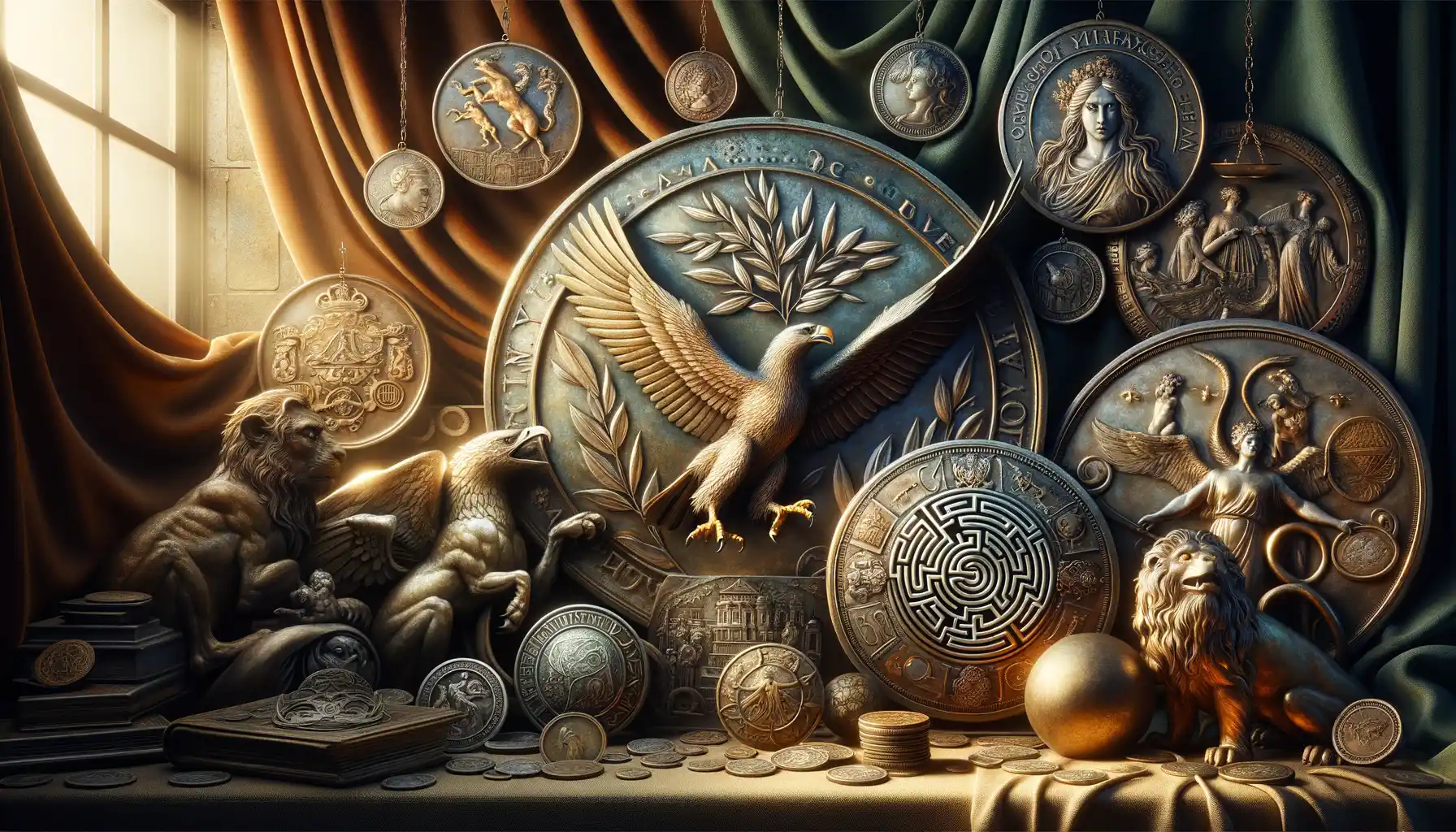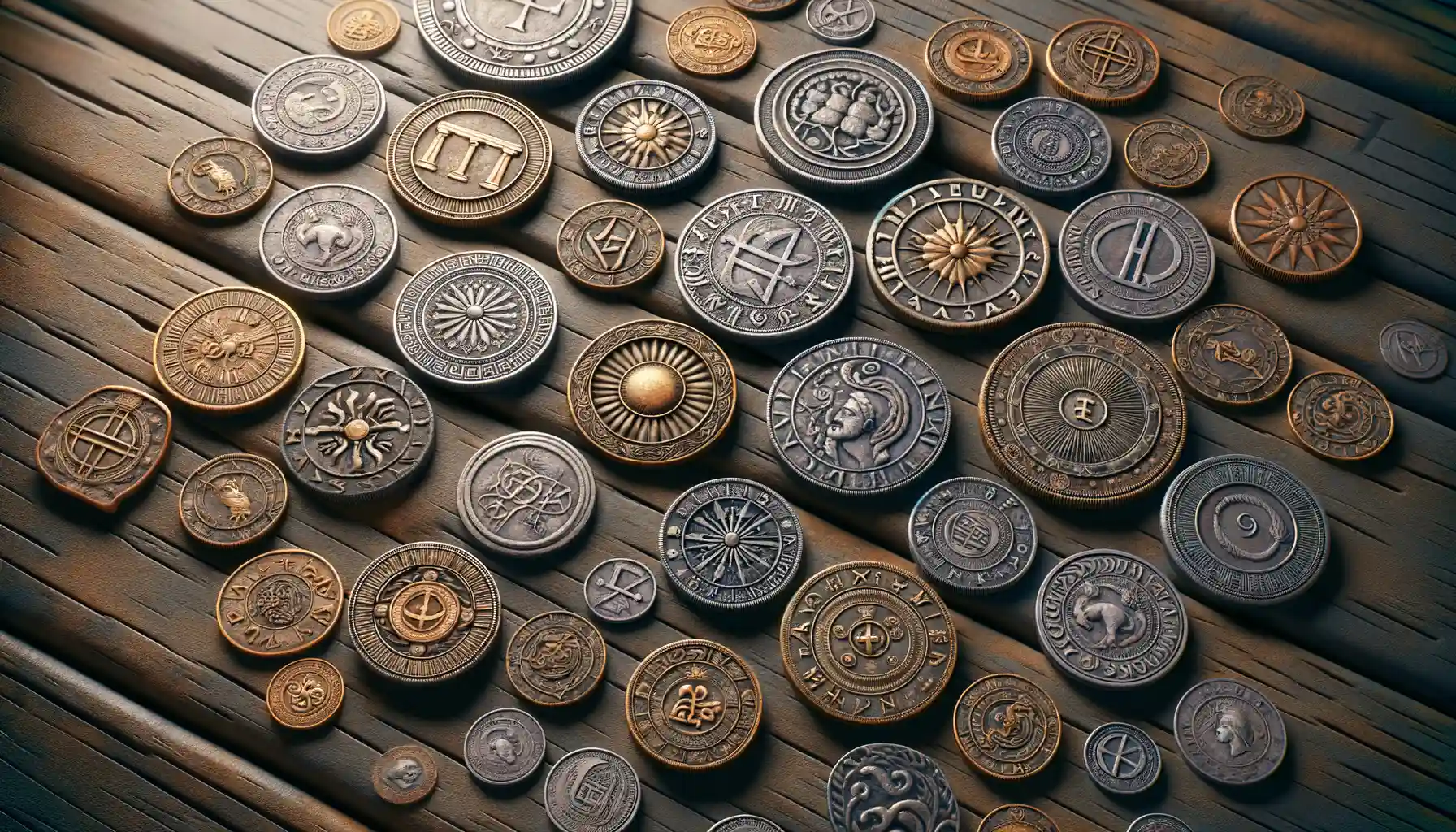Historical Context of Coins as Tools of Power
The Ancient “Message Boards” in Your Pocket
From the moment coins began to jingle in ancient pockets, they were so much more than simple tools for trade. Picture this: a Roman denarius stamped with the face of Julius Caesar. It wasn’t just currency—it was dominance, authority, and influence captured in metal. Early rulers understood one critical idea: if they could circulate their image or ideas through coins, they could create a portable billboard of power.
Coins carried unspoken messages into the hands of merchants, soldiers, and farmers alike. In a world where literacy was rare, images spoke louder than words. A few examples?
- An emperor’s face—untarnished by reality—symbolized eternal strength.
- A lion, eagle, or thunderbolt could scream dominance without saying a word.
- Slogans like “Peace Restored” turned kings into heroes overnight.
And here’s the genius: coins infiltrated every layer of society. Whether you were buying bread or paying taxes, you were reminded who wielded the real power. They were no mere commerce tools—they were the pulse of politics, chiseled in silver and bronze.
Symbolism and Imagery on Political Coins

Decoding Hidden Messages in Coin Designs
Imagine holding a coin in your hand—not just a piece of metal, but a silent messenger of political ambition. From ancient Rome to the present day, the designs etched onto coins have been crafted with meticulous intent. They’re not just decoration; they’re loud whispers of power, loyalty, and belief systems.
Take a closer look: does that ruler’s face, gazing out with steely confidence, remind you of someone untouchable? That’s no accident. By stamping their face on currency, leaders throughout history—from Julius Caesar to Napoleon—asserted, “I am eternal.” Coins became a mass-distribution canvas for their divine, victorious, or heroic narratives.
But it’s not just about faces. Look at the symbols: the olive branch murmurs peace; crossed swords scream military might. Some coins went a step further, embedding full ideologies, like Rome’s denarius displaying a she-wolf nursing Romulus and Remus—the very essence of Roman identity.
- Icons of animals represented empires’ strength or cunning.
- Mythical gods evoked protection, prosperity, or divine favor.
Every image, every detail, carries layers of meaning, waiting for the careful eye to decrypt their true purpose. Are you ready to listen to the stories these coins whisper?
Notable Examples of Coin Propaganda Across Civilizations

Timeless Messages Etched in Metal
Coins have whispered stories of power and ambition for centuries, their designs carrying more weight than their metal ever could. Take, for example, the ancient Roman emperor Julius Caesar. His likeness was boldly minted on coins—a shocking move at the time—as no living person had ever been featured before. The imagery screamed: “I’m not just your leader—I’m practically divine.” A political mic drop, wouldn’t you say?
Then there’s the Greek city of Athens, with its iconic silver tetradrachms. These coins proudly bore an owl, symbolizing wisdom and vigilance, paired with Athena’s head. Every single piece was a tiny billboard declaring Athens as a center of intellect and military dominance. It wasn’t just currency; it was a traveling advertisement of their identity.
- The Kushan Empire? They combined deities from multiple religions, a clever nod to inclusivity—and a reminder they ruled over diverse peoples.
- Medieval England’s King Offa? He copied Islamic dinar designs to enhance his legitimacy in international trade. Smart, right?
Coins didn’t just pay for goods; they bought loyalty, secured legacies, and spread ideologies one exchange at a time. Isn’t it fascinating how power can hide in plain sight?
Impact of Coinage on Public Perception and Ideology

Shaping Minds, One Coin at a Time
Coins are more than just cold metal discs jingling in your pocket—they’re storytellers, whispering tales of power, loyalty, and identity every time they pass from hand to hand. Imagine this: you’re an ordinary citizen in ancient Rome, holding a shiny new coin emblazoned with the image of **Julius Caesar**, crowned with laurels, exuding divinity. That coin is not just payment—it’s a persuasive argument. It tells you who rules, who protects, and who deserves unwavering allegiance.
Through their ubiquity, coins infiltrated everyday life on a level that no speech or decree ever could. As they traveled across cities, villages, and borders, they carried **imperial ideals**, subtly reinforcing who was in charge. Over time, holding such currency became an act of silent agreement—you were *literally* invested in the empire.
- The face of a ruler stamped on a coin made them omnipresent—like an ancient form of branding.
- Symbols like eagles, olive branches, or laurel wreaths whispered messages of peace, strength, and divine favor.
- Inscriptions often included lofty titles like “Conqueror,” nudging people toward admiration or reverence.
A Daily Reminder of Ideology
Picture this: peasants in a remote village have never set foot in the capital, but they know what their ruler looks like, thanks to the coins they handle daily. Over time, this familiarity shapes their worldview. The ruler becomes as inevitable as the sunrise.
Coins didn’t just reflect power; they forged it. By embedding **political slogans** or images of military victories into currency, leaders anchored their achievements in the minds of the masses. Whether it was **Alexander the Great** proclaiming his divine lineage or Renaissance kings showcasing trade success, the coin never simply paid—it persuaded, inspired, and sometimes, deceived.
Modern Interpretation and Relevance of Coin Propaganda Today

The Echo of Coin Propaganda in Today’s Messaging
It might seem that the days of rulers stamping their faces on coins are long gone—but think again! The essence of *coin propaganda* has simply morphed, finding a new stage in modern media and digital assets. Picture this: instead of metal discs passed hand to hand, we now have tools like NFTs, commemorative banknotes, or even corporate branding, all carrying subtle—or not-so-subtle—messages.
Let’s break it down:
- National pride: Think special-edition coins issued for Olympic games or royal anniversaries—mini billboards of power and unity in people’s pockets.
- Crypto messaging: Some cryptocurrencies capitalize on bold slogans and symbolic logos, essentially turning digital money into modern-day propaganda platforms.
How Symbols Speak Louder Than Words
Even today, governments and organizations know one truth: icons matter. Just as ancient emperors engraved their victories onto coins, modern leaders use currency design to provoke emotion. Consider the bald eagle on the U.S. quarter—strength, independence, freedom. It doesn’t scream “propaganda,” but its message resonates with every glance.
The tools may have evolved, but the game is the same: capturing hearts, minds, and eyes with just the right blend of power and artistry. Coin propaganda? It’s alive; it just changed its outfit.



